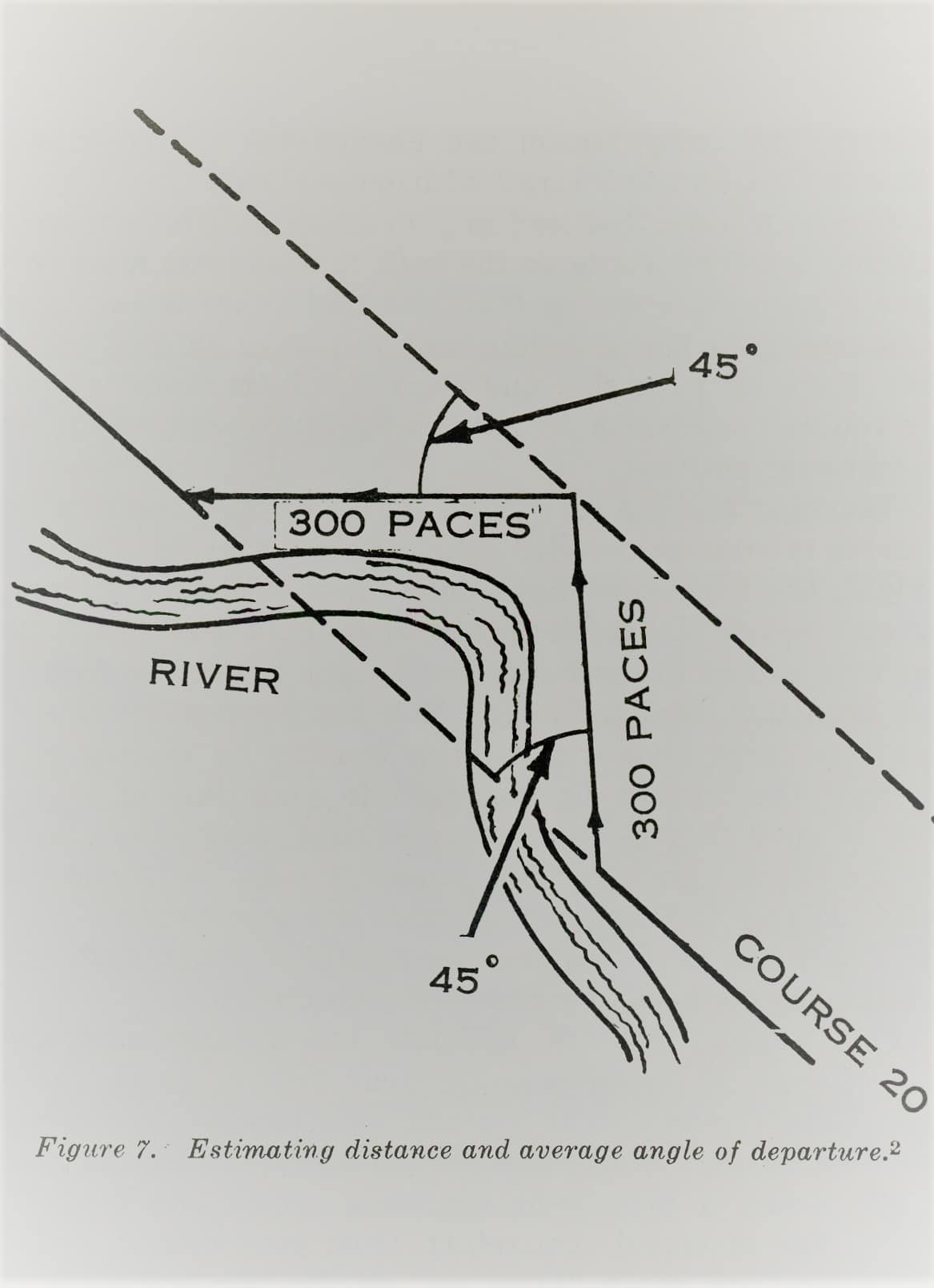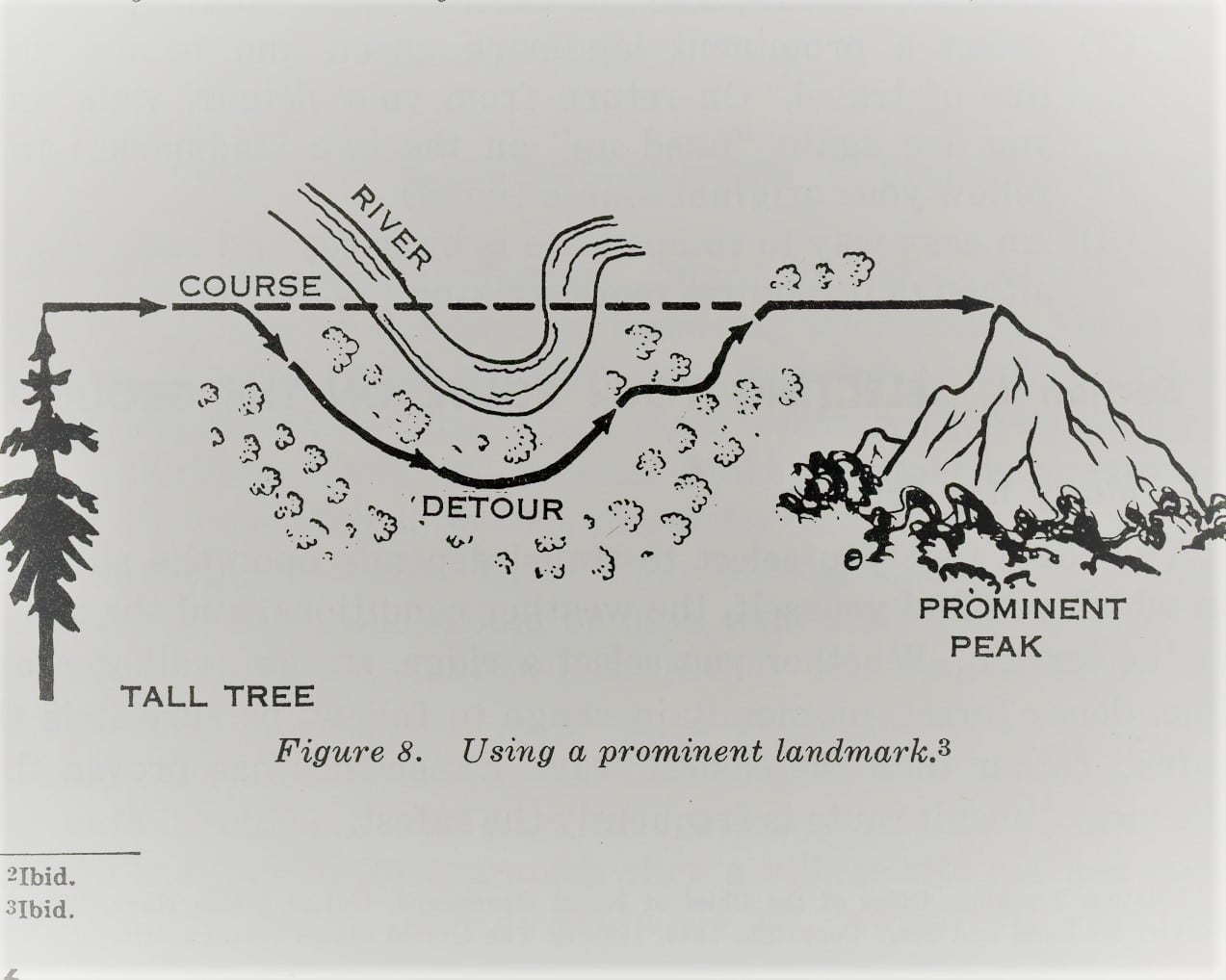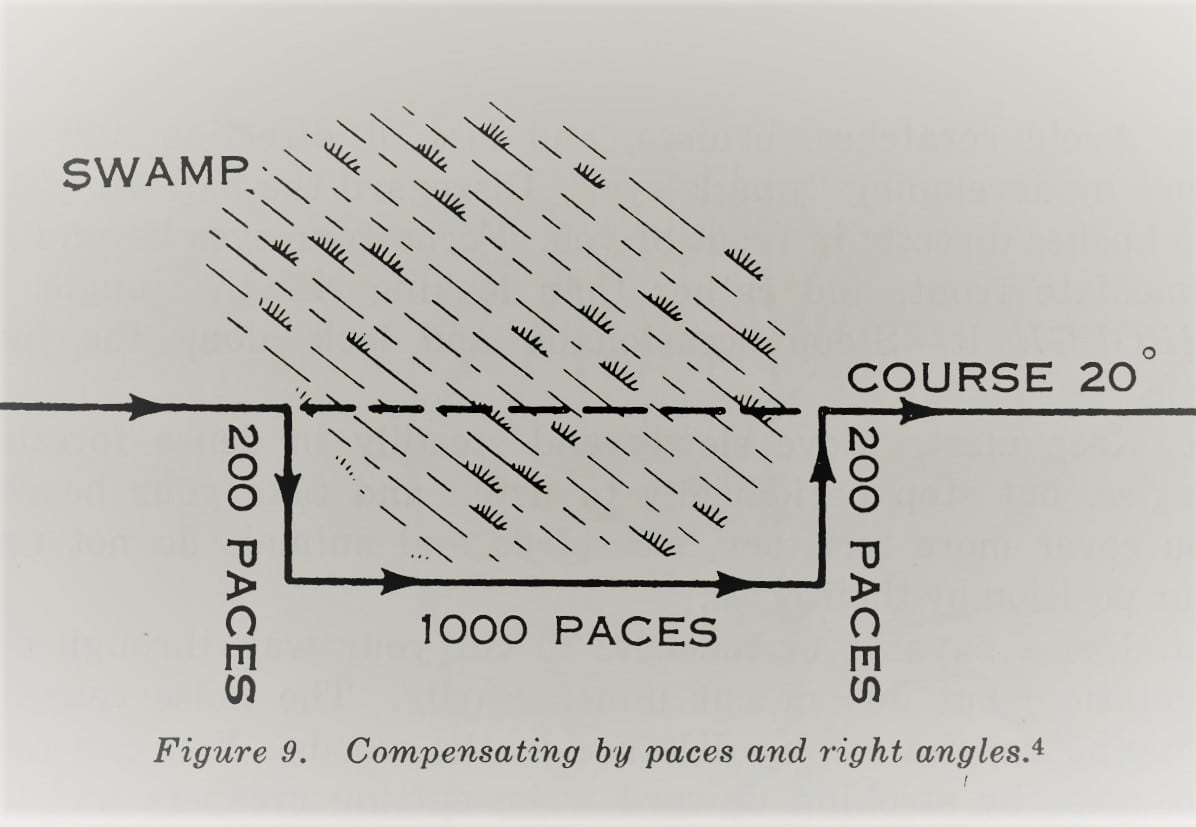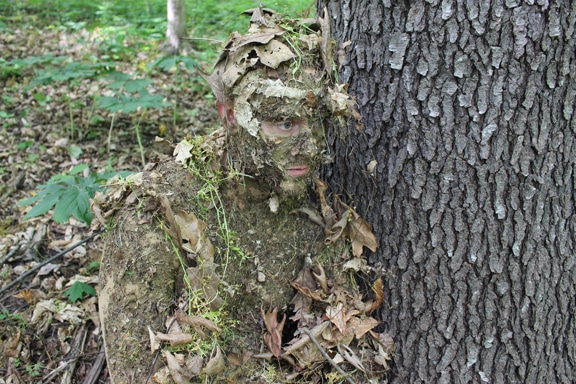Editor’s note: Even when you have a map and compass, and even when you’re following marked trails, it’s possible to take a wrong turn, head in the wrong direction, stray from your intended path and destination, and become lost when trekking in the wilderness. Following the tips below from FM 21-76: Survival, an Army field manual published in 1957, will help you stay on course. (Note that a few of the tips apply specifically to soldiers who need to avoid attracting the attention of potential enemy combatants in the area; however, most apply equally to all hikers and explorers.)
Keeping a Course
When clouds obscure the sun or stars, you need other methods to help you maintain your direction.
a. In strange country, study outstanding terrain features as you travel, and concentrate on keeping your course. Climb to a high point and look at the general pattern of the land, character of the vegetation, the drainage patterns, and the trend of mountains and ridges. Choose a prominent landmark that you can see while you travel. As you near this landmark, line up another one.
b. If you are traveling in a dense forest, you probably won’t be able to spot distant landmarks. You can hold a course by lining up two trees forward of your position in your direction of travel. As soon as you pass the first one, line up another beyond the second. You might find it helpful to look back occasionally to check the relative positions of landmarks or ground slope and contour.
c. You can usually use streams, ridges, and trees as guides in open country and as a means of retracing your route. On overcast days, in areas where the vegetation is dense, or whenever the country appears the same, mark your route with bent bushes, rocks, or notches cut in tree trunks. Make bushmarks by cutting vegetation or bending it so that the under and lighter side of the leaves is facing upward. These signs are especially conspicuous in dense vegetation but should be used with discretion because the risk of discovery involved in plainly marking your route.
d. Even if you have a map, don’t guide too confidently on manmade features or landmarks that are likely to change. The only safe landmarks are natural features such as rivers and hills. In the jungle, for example, when a village site marked on a map is investigated, it will often be an overgrown clearing. Similarly, one rainy season can change the course of a small stream or close an unused trail with dense shrub.
e. Guide on trails that lead in your general direction, and when you come to a fork, guide on the path that appears most traveled: If you guide on the wrong trail and find yourself lost, stop and try to remember the last time that you were sure of where you were. Mark your location and start “back tracking.” Sooner or later you will discover a recognizable feature with which you can pinpoint your position.
f. Travel at night is safe in the desert or open country, but not advisable in strange, wooded country. However, if you do travel at night, use a shielded light only when necessary to find your way over rough, dangerous spots, or to read a map or compass. Your eyes adjust to the darkness; a light blinds you to all but a small area that is illuminated. You can keep a fairly accurate course for short distances in open country by picking a bright star near the horizon (guide star) in your line of travel and lining it up with trees and other skyline landmarks ahead. Be sure you check your direction frequently with the North Star or Southern Cross and change your guide star accordingly.
g. You might have to detour frequently in rough country. Use the following methods to get back on your course:
(1) In short detours, estimate the distance and average angle of departure. On your return, gauge the angle and distance so as to strike your line again. For greater accuracy, count paces and use a compass (fig 7).

(2) Select a prominent landmark ahead and behind your line of travel. On return from your detour, walk until you are again “lined up” on the two landmarks; then follow your original course (fig 8).

(3) An easy way to compensate is by paces and right angles, although it requires more walking (fig 9).

SELECTING YOUR ROUTE ON THE GROUND
Study the Terrain
The route that you select to travel depends upon the situation in which you find yourself, the weather conditions, and the nature of the terrain. Whether you select a ridge, stream, valley, coastline, dense forest, or mountain range to follow, be sure it is the safest, rather than the easiest way. Experience has proved that the most difficult route is frequently the safest.
Following a Ridge
A route along a ridge is usually easier to follow than one through a valley. Game trails are frequently on top of ridges and you can use them to guide your travel. Also you find less vegetation, frequent high points for observing landmarks, and few streams and swamps to ford.
Following Streams
Using a stream as a route is of particular advantage in strange country because it provides a fairly definite course and might lead to populated areas; it is a potential food and water source and a vehicle for travel by boat or raft. However, be prepared to ford, detour, or cut your way through the thick vegetation lining the stream. If you are following a stream in mountainous country, look for falls, cliffs, and tributaries as check points. In flat country streams usually meander, are bordered by swamps, and are thick with undergrowth. Travel on them provides little opportunity to observe landmarks.
Following Coast or Shorelines
If you decide to follow a coastline you can figure on a long roundabout route. But it will be a good starting line, an excellent baseline from which to get your bearings, and probably a source of food.
Through Dense Vegetation
a. With practice you can move through thick undergrowth and jungle fairly silently by cautiously parting the vegetation to make your way.
b. Avoid scratches, bruises, and loss of direction and confidence by developing “jungle eye.” Disregard the pattern of trees and bushes directly in front of you. Focus your eyes beyond your immediate front, and rather than looking AT the jungle, look THROUGH it. Stoop occasionally and look along the jungle floor.
c. Keep alert. Move slowly and steadily in dense forests or jungles, but stop periodically to listen and take your bearings. You cover more territory, and birds and animals do not reveal your position by their cries.
d. Use a bayonet or machete to cut your way through dense vegetation, but do not cut unnecessarily. The noise caused by chopping carries a long distance in the woods. You can reduce this noise by stroking upward when cutting creepers and bush.
e. Many jungle and forest animals follow well established game trails. These trails wind and crisscross but frequently lead to water or clearings. If you use these trails do not follow them blindly. Make sure they lead in your direction of travel by checking your bearings frequently.

f. When you climb a tree to observe or get food, be sure you test each limb before putting your weight on it, and always have a good handhold on something sturdy. Climb close to the trunk because limbs are strongest at this point (fig. 10).








